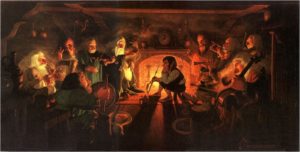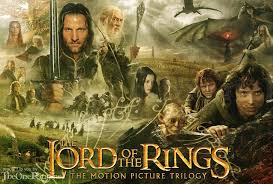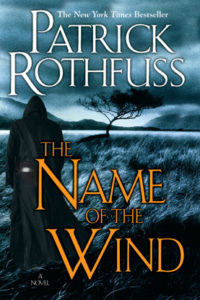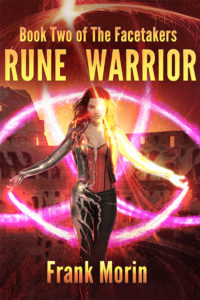Ho hum. Yawn. This story world is boring. YIKES! What does this mean? How do you fix it?
A boring setting means that the story world is dull and that the character’s interactions with it aren’t interesting. Who wants to read about a character’s morning routine (let’s call him Ted) – getting out of bed in the morning, making coffee and toast for breakfast seated at his table and munching and slurping as he reads the paper. (I am yawning, aren’t you? But stay with me, this story will pick up soon!)
Setting, or world building, involves not only the time period, genre expectations (science fiction, fantasy, historical, steampunk, to name a few), the milieu but also the ‘invisible’ things such as economics, politics, stability (war, peace, civil unrest, dystopia). From these are borne personal beliefs (may include religion) and values (for something, against something, or taking pains to be neutral). Mix these elements together to create opportunities for conflict which spurs characters into action.
Back to Ted. Let’s add an alarm clock and let’s make it a nagging hologram. Hologram – that’s futuristic. Ted has been partying the night before because today was his day off from his job as a strategist for the Space Army. Only the hologram won’t let him sleep and it’s nagging him to contact his commander – code confidential and urgent. Only, Ted isn’t thinking clearly yet so he tumbles out of bed, hits the dispenser for coffee and it’s not working yet again. He stumbles back into the bedroom, searches for his laser gun and notices a lump on the bed. He rips the sheet off and sees a woman obviously dead. A hologram of the commander appears to tell him to get his sorry self to a meeting. Secret Agent Alvaret is missing and along with her, key information that will compromise Space Army’s plans to stop the advance of the Slimy Worms and to save Space City.
Ted’s world now holds the promise of a futuristic science fiction world with an impending war and a murder to solve. We have the sense of the politics, the chain of command, and although the economics and daily lives of inhabitants are somewhat sketchy at this point, there is a lot of opportunity to create something interesting. The murder victim provides an opportunity to explore and to learn about the world through the investigation of her murder (Ted will have to figure this out because he’ll be blamed, and as he searches for clues, we’ll get to explore the world through his eyes).
Someone may argue that what I’ve just created is a premise not the setting. Boring Ted in a boring setting wouldn’t have an opportunity for a dead body to appear in his bed let alone have the fate of a space nation in his hands. He’d likely just have read about it in the paper and then gone to work. But that does not make a story.
However, if it’s boring Ted you still want, he needs to somehow be made a character readers will want to read about. He may be an ordinary man thrown into extraordinary circumstances. He’ll need quirks, issues to overcome, a reason to overcome them in a setting/world which won’t want him to overcome them. So although Ted may be your ordinary man, he’ll still have to function in extraordinary circumstances. Those circumstances are setting, with attention to detail even if it’s set in current times. Again, that means paying attention to details and taking nothing for granted about time and place. For some great examples on how to do this, read current mysteries set in modern times.
If the setting you’re creating feels boring, here are a few things to consider:
1) You don’t know the setting well enough yet.
Settings, like characters, can become cliché and trite. In Ted’s case, the author would need to know something about military strategy, about life on a space station/city, how the science operates, who the Slimy Worms are (background, aliens, humans) and why and how they pose a threat. In short, we need to know how the world works and what the character’s place is in it and how he sees it and himself. If these details haven’t been thought through, the setting won’t be rich enough to hold the reader or for the character to interact with.
2) You know the setting well and have thought through the details.
You know it but does the reader? Have you shown it as best as you can? Have you shown us the important details and not assumed that we can see what you can? Find ways to integrate the description into the story. For example, pinpoint tangible details using strong nouns and verbs along with dialogue and action. This will help strike the balance between showing and telling.
3) Too much telling and not enough showing.
Too much telling can be boring. Description after description after description! Is that information important? Sometimes it is. Telling can be in the form of exposition, narrative summary or static description. There is a place for it but it must be used sparingly: if there is information that a reader needs to know: actions or time need to be sped up; or showing would be too long and would slow the story down. But always, avoid adjectivitis! Too many adjectives, too many descriptors, can bore readers and slow the story. Always consider if the details are important. If not, cut them. If they are important, use strong nouns and verbs.
No matter how and when you describe setting, how you show it through dialogue, emotion, internal monologue, action or exposition, setting has only one purpose. That is to help move the story forward.
When editing your story, ask these questions:
1) Is the sentence showing or telling?
2) Note if you or your beta readers feel themselves skimming over information. Ask: Is it info dump? What purpose does this information have?
3) Is the sentence too long? Does it contain too much information? Is it important? What do I need to say to move the story forward? How much impact or punch does the sentence have? This means accuracy, clarity and brevity. However, as Ken Rand notes in THE 10% SOLUTION, if accuracy and clarity (therefore more words) are needed to tell a story, then brevity must take a back seat.
Setting need not be boring. It is only if we don’t explain it well enough, or use it properly (either in info dumps or without clarity) in the context of the events in the story. Know your world well and explore it with your protagonist as you write. Use the editing process to determine if there is sufficient information about the setting and if your characters are serving not only the plot, but also to reveal the world to the reader.
Now, to do something about that boring title …
When Setting Sets the Scene for a Publisher’s Rejection
or
I Forgot Where I Am or Why
or
Zzzzzzzzzzzzz…………..

 At this point we see Bilbo sitting outside smoking some pipe-weed. This is the kind of small detail that can transform a scene and make it rich and lively. He is enjoying his morning when Gandalf wanders by. Again, the small details about Gandalf’s background are sprinkled generously to immediately capture the attention of the reader, and it’s masterfully done. We want to know more about this wizard and the adventures he’s been on!
At this point we see Bilbo sitting outside smoking some pipe-weed. This is the kind of small detail that can transform a scene and make it rich and lively. He is enjoying his morning when Gandalf wanders by. Again, the small details about Gandalf’s background are sprinkled generously to immediately capture the attention of the reader, and it’s masterfully done. We want to know more about this wizard and the adventures he’s been on! That beginning spot where Bilbo is puffing away and getting a bit annoyed at Gandalf for butting into his quiet morning, only to be dressed down after Gandalf reads Bilbo the riot act “as if Gandalf was selling buttons at his door”, shows a lot of subtle worldbuilding. We learn a bit more about the culture of the hobbits and, at least at first, that this particular hobbit starts off with a cheerful outlook. When the idea of adventures pop up in conversation we discover that hobbits like being predictable, and that there are no adventurers around Hobbiton. The droplets of culture are helping to build out the world of the Shire without being obtrusive. Instead of handing the reader a laundry list of boring and sometimes unnecessary information, Tolkien slips us small doses that we can consume without getting bored.
That beginning spot where Bilbo is puffing away and getting a bit annoyed at Gandalf for butting into his quiet morning, only to be dressed down after Gandalf reads Bilbo the riot act “as if Gandalf was selling buttons at his door”, shows a lot of subtle worldbuilding. We learn a bit more about the culture of the hobbits and, at least at first, that this particular hobbit starts off with a cheerful outlook. When the idea of adventures pop up in conversation we discover that hobbits like being predictable, and that there are no adventurers around Hobbiton. The droplets of culture are helping to build out the world of the Shire without being obtrusive. Instead of handing the reader a laundry list of boring and sometimes unnecessary information, Tolkien slips us small doses that we can consume without getting bored.



